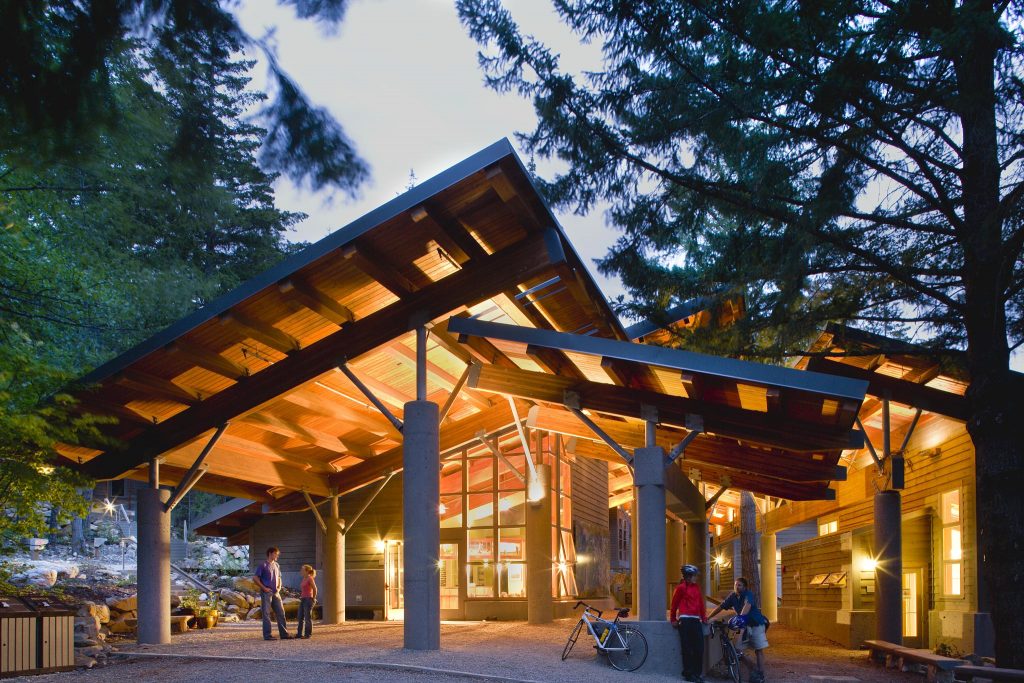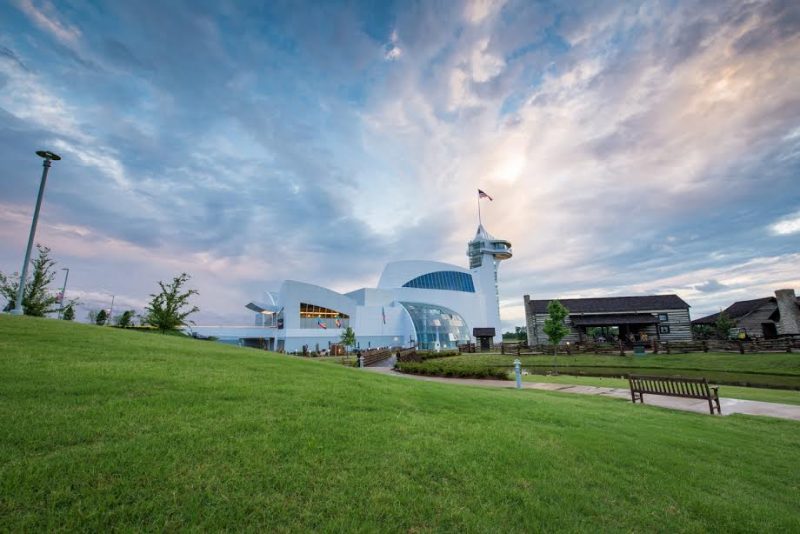

At ground level, coyote, chipmunks and raccoons inhabit the woods, while offshore a marine park shelters sea lions and harbor seals. Wildlife is abundant in Discovery Park, particularly birdlife: 270 different species have been logged. Visitor facilities are limited, but the spot offers one of the best vistas of the Sound. Seventeen acres in the north of the park are Native American land and home to the Daybreak Star Indian Cultural Center, a community center for the United Indians of All Tribes Foundation (UIATF), a confederation of the many Native American tribes in the Seattle area. The park also has five miles of paved bike trails. You can circumnavigate back round to the Loop Trail via North Beach. This trail goes by Discovery Park Loop Trail, South. Branch off onto the South Beach Trail descending down a steep bluff if you want to view the still-functioning West Point Lighthouse, a great spot for panoramic views of the Sound and mountains to the west. This is a moderate out and back trail to Discovery Park Environmental Learning Center in Discovery Park. The main walking trail is the 3-mile-long Loop Trail, part of a 12-mile network of marked paths. Here you can organize educational programs including Saturday nature walks, day camps for children and bird-watching tours. There are several walking trails and biking trails in Discovery Park ©David7/Shutterstock Trailsįor a map of the park’s trail and road system, stop by the Discovery Park Environmental Learning Center near the Government Way entrance.

Not surprisingly, there was a lot of interest. The first houses went on the market in 2015 with prices starting at around $800,000. Because all 26 buildings are on the National Register of Historic Places, the exterior architectural features have been kept intact. Soon after the military officially pulled out in 2012, the old officers' houses, many of which date from the early 20th century, were refurbished for private sale. When the fort was declared surplus property in the 1960s, the City of Seattle decided to turn it into a park, but various historic buildings from the fort remain. Over the course of the war it held up to 1400 German and Italian prisoners. Fort Lawton didn’t see much action until WWII, when it was used as barracks for troops bound for the Pacific theater. The peninsula occupied by the park was originally Fort Lawton, an army base established in 1897 to protect Seattle from unnamed enemies. Historyĭiscovery Park is a relatively recent addition to the city landscape it wasn’t officially inaugurated until 1973. Park Map – aerial photo with trails, boundaries, etc.Hard to beat on a sunny spring day, this former military installation has been transformed into a wild coastal park, laced with walking trails and offering glimpses of the Olympic Mountains across the water. It's the largest green space in the Seattle, with 534 acres of forest, meadows, sand dunes and beaches, providing a welcome escape for locals and a vital corridor for wildlife.On Cedar Street in Muscatine, just off Highway 61.No food or drink allowed in exhibit spaces.Variety of Public Conservation Education programs.Monthly Conservation Board meetings the third Mondays at 7:00 p.m., public welcome.Large shelter with modern restroom- reserve shelter.Large classroom with center divider – reserve classroom.Natural history exhibits featuring change in habitats and wildlife in Iowa.Two 1200-gallon aquariums with native fish.Monday-Friday – 8:00 am-4:30 pm & Saturday-Sunday – 12:00-4:00 pmĬlosed most holidays – call (563) 264-5922 for current information Features foot facility located in Discovery Park in Muscatine houses the Muscatine County Conservation Board offices, natural history exhibit space, and a large classroom/meeting space.


 0 kommentar(er)
0 kommentar(er)
